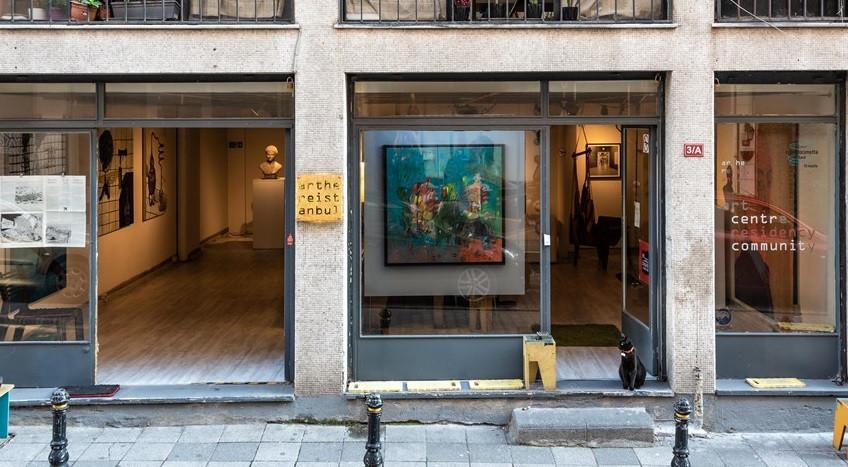Artistic space bridging gap between local, Syrian artists
ISTANBUL/ANKARA

Artists in Istanbul are helping build bridges between the city’s native residents and Syrians displaced by a decade of civil war.
Initially founded in 2014 by Syrian artists, Arthereistanbul is an independent and nonpartisan space for artistic creation, dialogue and culture, far away from conflict and political rivalries.
Omar Berakdar, the founder of Arthereistanbul, told the state-run Anadolu Agency that it was a place for artists who face the challenges of not having a place to work and develop their skills after leaving their war-torn country and settling in Istanbul.
“We’re aware of the rich cultural and artistic diversity of the Middle East that we see as a historical region and home to many cultures, without defined borders or binding ideologies,” said Berakdar, who is also a photographer and media artist.
Berakdar said he moved to Istanbul in 2012 when life in Syria became “very difficult” due to the brutal crackdown of the Syrian regime.
“When I moved to Istanbul, I was expecting that our stay would be temporary. As time passed, I realized that we would be staying here for a longer time. I started to look for a way to support Syrian artists like me who moved to Istanbul, and a way to build bridges between Syrian and Turkish artists and the rest of the World,” he added.
The idea to establish Arthereistanbul came in response to the need for a moderated space where all could freely get acquainted with each other and cooperate artistically, which could help artists and a wider community in Istanbul, he added.
“We support Syrian artists in many ways, by providing them with a space to work, access to our network of collaborators in Turkey and the world and by creating opportunities for those who want to participate in our ongoing activities,” Berakdar said.
Arthereistanbul not only exhibits projects for Syrian refugees but also Turkish artists, including group performances, exhibitions and workshops, he added.
Underlining that many artists got involved in Arthereistanbul over the years, Berakdar said that while some of the artists were still in Istanbul, others were on their way to Europe or other places.
So far, they have participated in Contemporary Istanbul, annual exhibitions of Bilgi University and Saint Pulcherie High School, as well as in an exhibition displayed on the occasion of Refugees Day in the U.N. presented by the Turkish Presidency, Berakdar said.
“All feedback was positive, and lots of people were surprised about what we’re doing,” he said while advising people “not to believe what they heard in the media and try and know Syrian neighbors instead.”
















